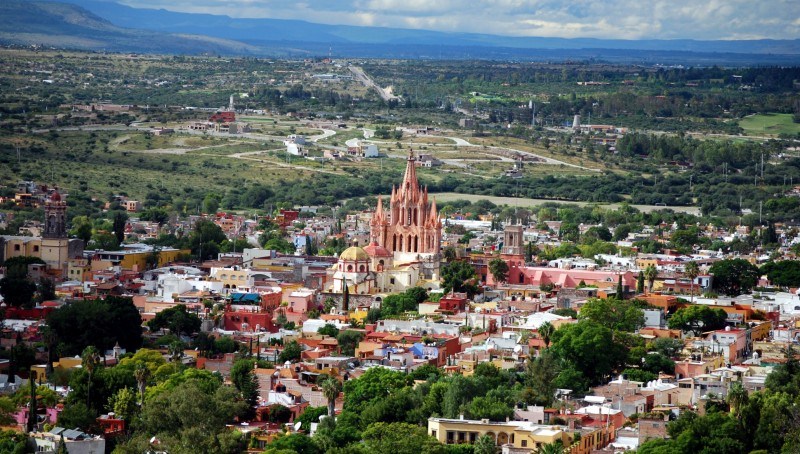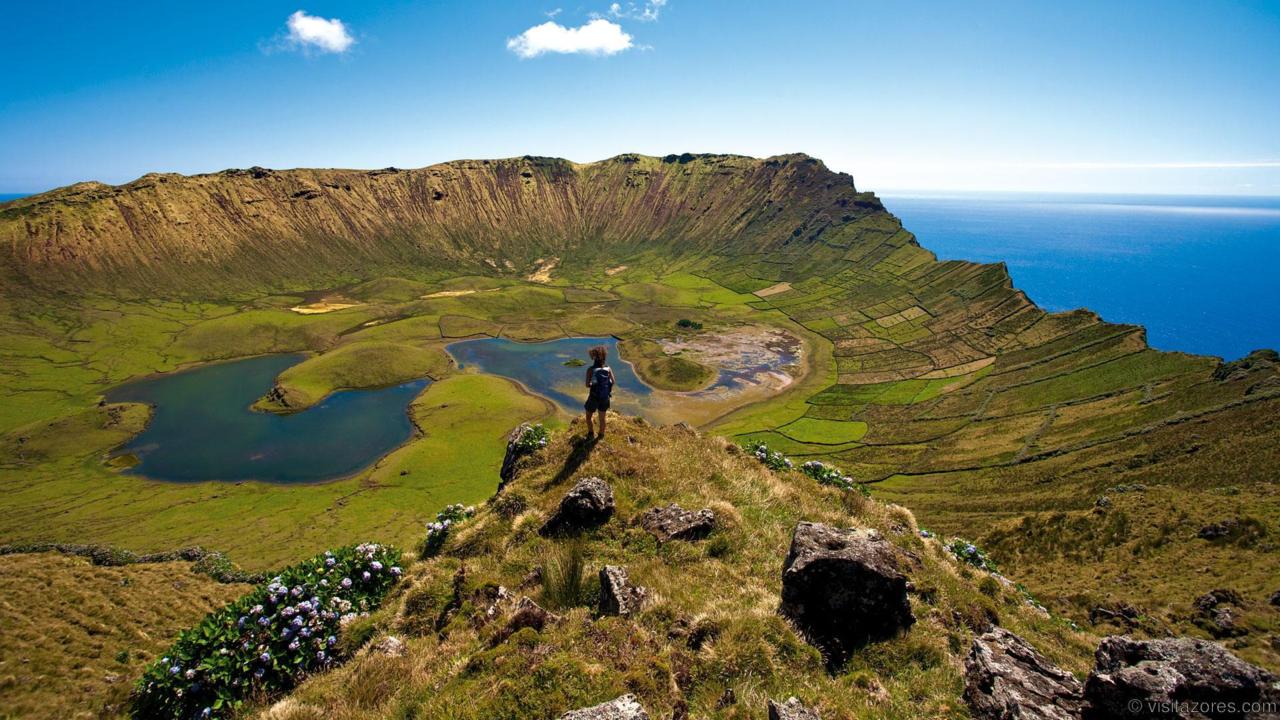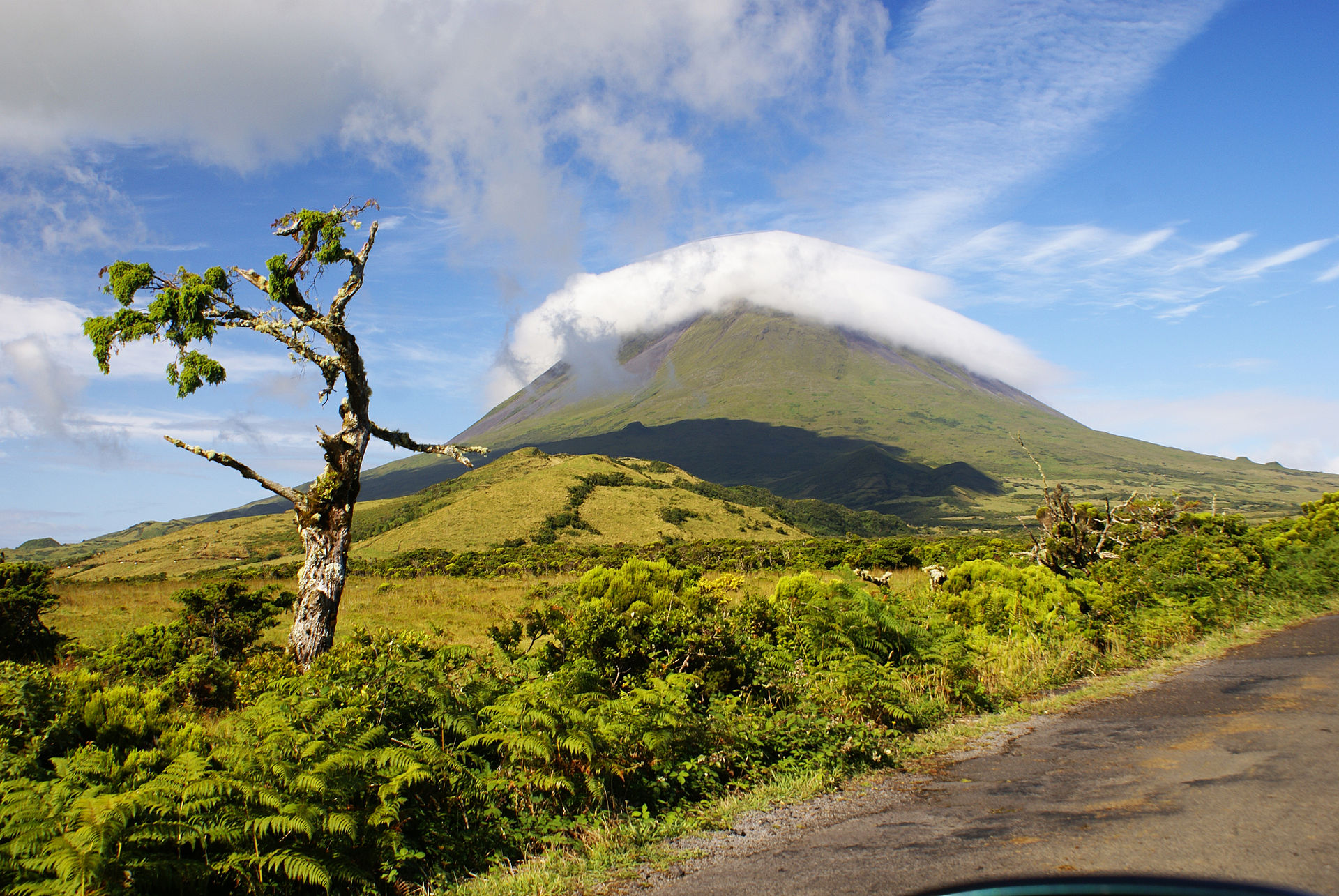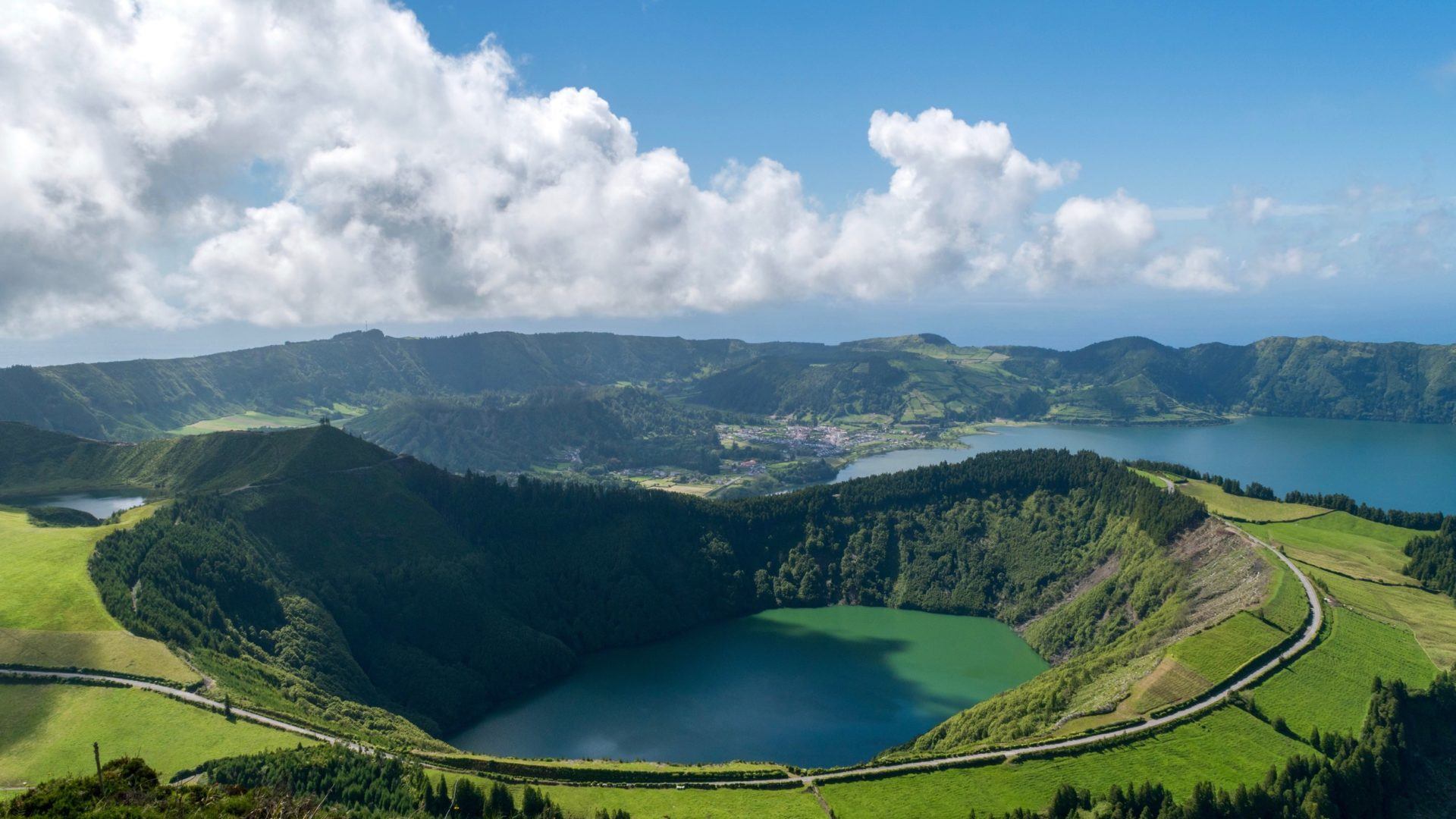Magical and mystical, these Atlantic islands are often kept a secret, even by those who visit. Nature, history, culture, wildlife, beaches, our guide to the Azores reveals all!
Discover an archipelago of volcanic islands cast adrift in the Atlantic Ocean.
The Azores have something for everyone. And a little of everything for someone.
Lazy hours on a quiet golden-sand beach, hiking along lava trails, unusual cultural encounters, wine tasting and tea plantations, waterfalls and watching whales from the shore.
Nature, history, culture, wildlife, beaches: our guide to the Azores reveals all.
Magical and mystical, these Atlantic islands are often kept a secret, even by those who visit.
They’re defined by raw nature and perfect for adventure, with every island offering something different, as shown in our guide to the Azores.
The Azores: Why? Where? What?
These islands are in the middle of the Atlantic, halfway between Portugal and New York. International flights land at Ponta Delgada Airport on Sao Miguel, the largest and most populated island in the archipelago. The other islands are connected by local flights and ferry services; most visitors visit at least two islands but you could easily see all nine of the main islands.
Officially the Azores are part of Portugal, although the atmosphere and culture is a huge contrast to Lisbon and the mainland. Arrive on any of the islands and you can hire a rental vehicle, or take day tours from the main town.
Many islands claim to have something for everyone. The Azores really do. The wilderness is spectacular, from volcanic leftovers to thick rainforest, cliff hikes to passing whales. Local culture mixes laid-back island life with a unique language and style . There are evocative 16th-century pirate towns, old whaling villages, bubbling mud pools, lake kayaking, lots of walking, and subterranean adventure. And the beaches aren’t bad either.
The only challenge is that flights here can be expensive. The Traveling Islanders recommendation is to come for at least one week, preferably two. Then you can explore further, discovering how untouched and unknown these islands really are.
Islands of the Azores Travel Guide
Sao Miguel

The largest and most developed of the islands, Sao Miguel is an unmissable starting point. Ponta Delgada has good hotels and restaurants, so use the town as a base for a Jeep safari to the east of the island, plus a swimming with wild dolphins boat tour. Don’t miss a hike up the cliffs overlooking the Atlantic or the small artisanal villages that provide an easy insight into unique Azores culture. Another outdoor adventure is to kayak and mountain bike around Sete Cidades, a jade-green volcanic lake on the undeveloped western side of the island.
Faial

Black rocks and volcanoes meet the Atlantic on Faial, the so-called Blue Island. Hydrangeas line the roads, blue flowers bloom on the valleys, and almost all the island is protected as a nature reserve. Base yourself in the old sailer town of Horta and head out on hikes around Capelinhos Volcano. Faial is also one of the two main islands for whale watching: whale season is April to October.
Pico

A breathtaking UNESCO Heritage trail traverses tiny Pico, taking you through subterranean volcanic remains to lava-soil vineyards and peculiar lagoons. Pico Volcano is at the island’s heart, rising 8000 feet straight from the ocean. It’s a dramatic sight to contrast the island’s old whaling villages. Also consider Pico for whale watching, with spring and early summer a chance to see a blue whale swimming past.
Terceira

Visit Terceira for old-world culture. Angra de Heroismo was where New World explorers would stop on route to and from the Americas. Of course, they were joined by pirates and greedy whalers so the town has quite a history. It’s now a living World Heritage Site, surrounded by lava tubes, vineyards and caves. Stay in Angra de Heroismo and also take a morning trip to the 15th-century fishing hamlets that dot the edge of the island.
Flores
The wildest and westernmost of the Azores, Flores is a haven for nature lovers. It feels like an Eden, a paradise of volcanic calderas, green cliffs, untrammeled beaches, and vertical lava formations. You need time on Flores, as well as a strong sense of adventure. It’s a great island for hiking and a good place if you seek an exotic escape from the rest of the world.
Corvo
Usually visited on a day trip from Flores, Corvo is home to one of Europe’s most unusual cultures. Less than 500 residents keep alive a language and lifestyle that’s distinct from the rest of the Azores and Portugal. Just take the ferry from Flores and head out on one of the excellent half-day cultural tours.
Graciosa
Part of a UNESCO Biosphere Reserve with Corvo and Flores, Graciosa is a tiny island that can be a real battle to get to. It’s become the most adventurous stop on an island hopping itinerary, a wish list stop for island lovers and intrepid backpackers.
Sao Jorge
A very unique combination makes Sao Jorge perfect for a romantic getaway. It’s easily accessible by local flights and ferries, yet the island is completely wild and untouched by tourism. Stay in the sleepy harbur of Velas. Or try one of the remote campsites and guesthouses that feel like they’re on the edge of the world.
Santa Maria
The beaches are white and the volcanoes are green on the southernmost of the Azores islands. It can be expensive to get to Santa Maria, but there’s nowhere better in the archipelago if you want a week on an empty beach.
Is Azores The Island For You?
There’s not much else you need from us. There’s so much to do on the Azores that everyone will have a different itinerary. As a general overview to the archipelago, fly west for the wildest nature, south to the best beaches, and around Sao Miguel for a really diverse vacation.
These are islands for island lovers, and best of all, they’re mostly unknown to the rest of the world.



Comments